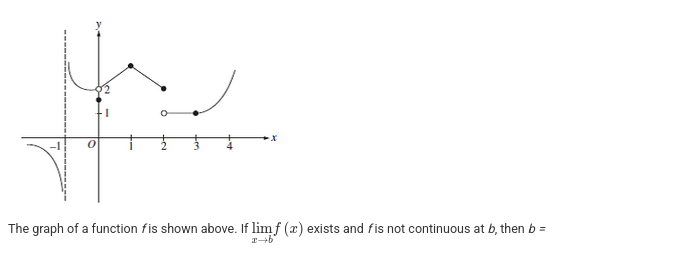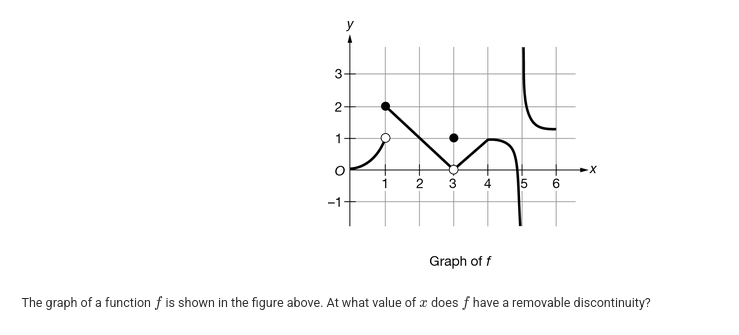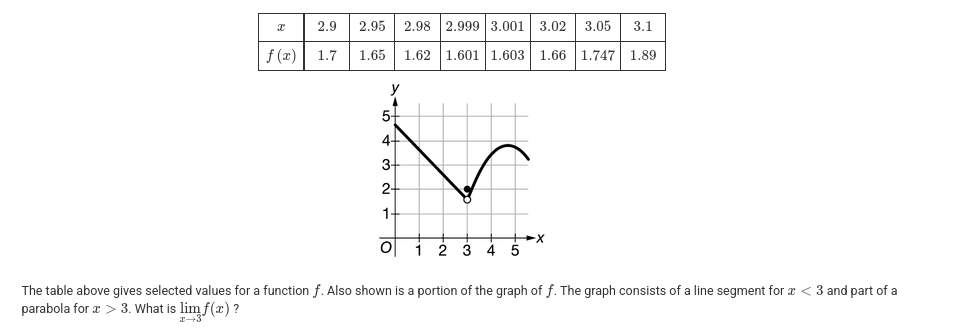AP Calculus BC - Unit 1 MCQ Bank
1/19
Earn XP
Description and Tags
Hlahla said 10 of these would show up on the test.
Name | Mastery | Learn | Test | Matching | Spaced |
|---|
No study sessions yet.
20 Terms

The function f is given by
. Which of the following statements are true?
I. The graph of f has a horizontal asymptote at y=0 .
II. The graph of f has a horizontal asymptote at y=1 .
III. The graph of f has a vertical asymptote at x=0 .
A. I only

The graph of which of the following equations has y=1 as in asymptote?
C. y = (x)/(x+1)

The graph of a function f is shown above. If LIM exists and f is not continuous at b, then b =
B. 0
![<p>Let <em>f</em> be a continuous function on the closed interval [-3,6]. If f(-3)=-1 and f(6)=3, then the Intermediate Value Theorem guarantees that</p>](https://knowt-user-attachments.s3.amazonaws.com/9b315fe5-711f-431d-bce8-7d5d62ee6023.png)
Let f be a continuous function on the closed interval [-3,6]. If f(-3)=-1 and f(6)=3, then the Intermediate Value Theorem guarantees that
D. f(c)=1 for at least one c between -3 and 6

Let f be a function that is differentiable on the open interval (1,10) . If f(2)=-5, f(5)=5, and f(9)=-5, which of the following must be true?
I. f has at least 2 zeros.
II. The graph of f has at least one horizontal tangent.
III. For some c, 2<c<5, f(c)=3.
E. I, II, and III
![<p>Let <em>g</em> be a continuous function on the closed interval [0,1]. Let <em>g</em>(0)=1 and <em>g(</em>1)=0. Which of the following is NOT necessarily true?</p>](https://knowt-user-attachments.s3.amazonaws.com/119c6fb9-aa0d-43a6-9a2f-857013380b57.png)
Let g be a continuous function on the closed interval [0,1]. Let g(0)=1 and g(1)=0. Which of the following is NOT necessarily true?
D. There exists a number h in [0,1] such that g(h) = 3/2

Let f be the piecewise function defined above. Which of the following statements is false?
C. f is continuous at x=3.

The graph of a function is shown in the figure above. At what value of does have a removable discontinuity?
B. x=3

Let F be the function defined above. Which of the following statements is true?
B. f is not continuous at x=1 because f(1) does not exist.

f(3) = -1

x=5 and x=0 only

g(x) = 0 has at least two solutions in the interval [2,4]

f(x) = 12.235

f is continuous for all x.

5

II only

3

1 / 2n²

II and III only

1.6